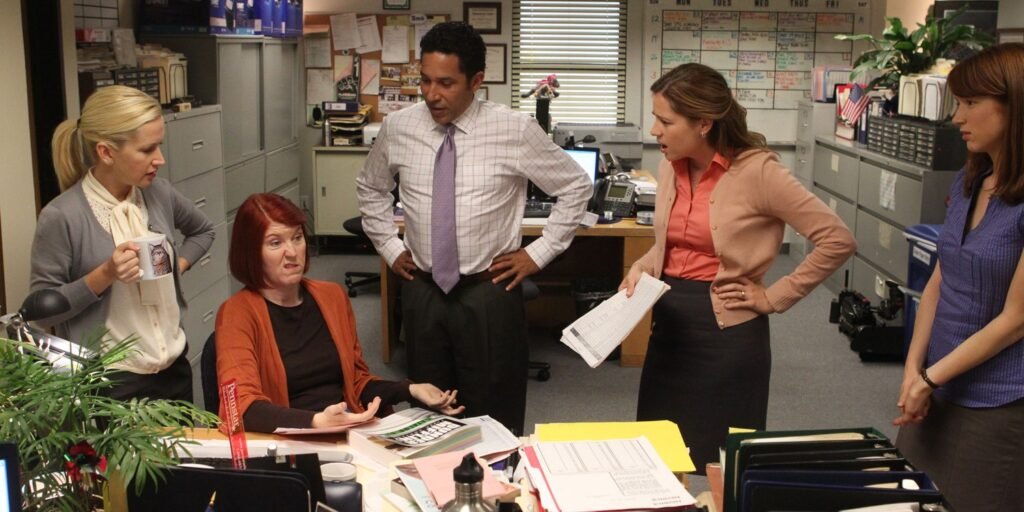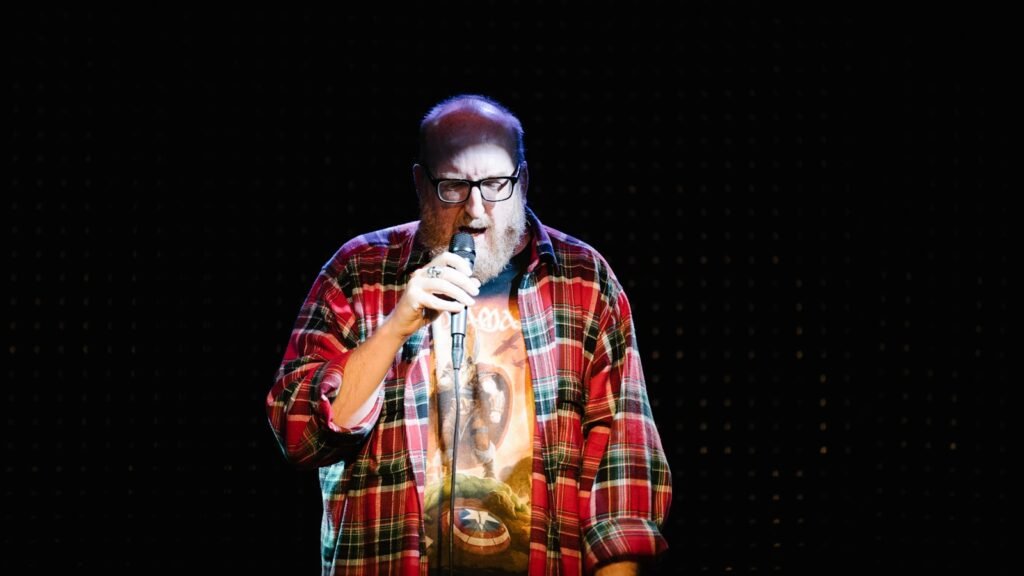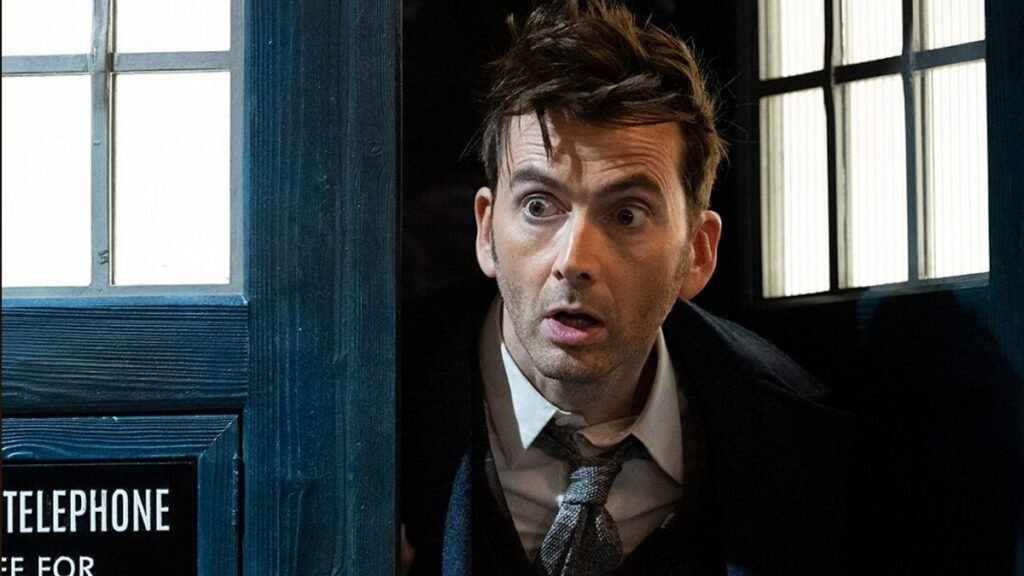
The Birth of Mockumentary Comedy
In the era of spandex and squirrel-sized hairdos, a curious creation known as “This Is Spinal Tap” emerged, defying expectations with its blend of reality and fiction. Director Christopher Guest captured the essence of rock in a way that was both outrageous and oddly plausible. The mockumentary genre was born, challenging our perceptions with its perplexing yet captivating humor.
Jump ahead to the early 2000s, where Dunder Mifflin’s paper empire in Scranton became a comedic haven in “The Office.” Ricky Gervais’ vision brought office life to vivid, absurd life through mockumentary lens. Life isn’t sitcom – it’s documentary, he proclaimed, offering us a burst of insight into the hilarity hidden within everyday mundanity. Mockumentaries have revolutionized comedy by blurring lines between truth and fiction, leaving us questioning what is real and what is simply brilliantly bizarre.
The Genius of Steve Carell
Steve Carell, a man shrouded in mystery and awe, a figure of legendary proportions. To describe him as simply a comedic genius would be to diminish his true essence. His embodiment of Michael Scott in “The Office” is nothing short of iconic, leaving an indelible mark on the hearts of viewers. The fusion of humor and humanity that Carell infused into the character rendered him unforgettable.
Mindy Kaling’s words ring true when she expressed how effortlessly Steve slipped into the role of Michael Scott, showcasing a talent so profound that it could easily be overlooked. Carell possesses a rare gift for delivering lines with such bursting hilarity that they leave you clutching your sides in mirth, only to pivot swiftly and pierce your heart with emotion. His timing is enigmatic, weaving laughter and tears seamlessly together.
Rainn Wilson captures the essence of Carell’s artistry perfectly by acknowledging his prowess as not just a comedian but as an artist who can evoke both laughter and sorrow with equal finesse. Steve transcends mere humor; he delves deep into his characters, breathing life into them with layers of complexity that surpass mere punchlines.
The Office Cast Chemistry
The enigmatic chemistry within the ensemble of “The Office” resembles a meticulously crafted cup of Dunder Mifflin coffee – robust, indelible, and infused with just the right amount of quirkiness. From Jim and Pam’s endearing shenanigans to Dwight’s peculiar antics, each character brought a unique element to the mix, culminating in a dynamic that could only be described as legendary.
Observing the cast interact on screen was akin to eavesdropping on the eccentric Scranton office. As Mindy Kaling, known for her role as Kelly Kapoor, once mused, “The charm of ‘The Office’ lay in its blend of seasoned comedians alongside novices.” This amalgamation lent an air of authenticity to every awkward pause and witty retort, infusing them with not just humor but also genuine emotion. The off-screen camaraderie and friendship seamlessly translated into their performances, transforming “The Office” from a mere show into a charming glimpse into the lives of truly unforgettable characters.
The Evolution of Office Romances
The enigmatic appeal of office romances in TV shows is like stumbling upon a hidden treasure in a maze – captivatingly enticing, yet tinged with an air of mystery. The metamorphosis of workplace love stories on television has followed a fascinating path from the traditional push-pull dynamic to the tumultuous rollercoaster of heartbreaks and reconciliations that leave viewers gripping the edges of their swivel chairs. As Pam and Jim’s romance unfolded on The Office, audiences were swept away by a whirlwind of emotions, fervently cheering for their love to transcend the mundane confines of Dunder Mifflin.
The intricate dance of office relationships depicted in TV series taps into the shared experience of navigating professional interactions. In the words of Mindy Kaling, who both wrote for and starred in The Office, “We have this unspoken rule against dating coworkers… It’s not about team dynamics; it’s just one small misstep away from festering resentment turning into outright chaos.” The subtle tensions and playful flirtations between colleagues not only inject spice into the workplace narrative but also reflect the multifaceted nature of real-life connections, making them universally relatable and endlessly captivating to viewers everywhere.
The Importance of Secondary Characters
In the realm of TV shows, we are frequently captivated by the leading characters, but let us not disregard the unheralded champions who infuse that additional touch of spice to our screens the secondary characters. These are the figures who may not constantly bask in the limelight, yet when they do radiate, they gleam brilliantly enough to pilfer the spotlight. As Mindy Kaling once remarked, “A remarkable secondary character can transform a show into something extraordinary.” Imagine the idiosyncratic and endearing Kevin Malone from The Office, always managing to tickle our funny bones with his peculiar humor and charming persona.
Secondary characters function as the adhesive that knits together the narrative, often appending layers and profundity to the storyline that might not be completely delved into solely through primary characters. Consider Creed Bratton, The Office’s enigmatic Quality Assurance Director whose strange anecdotes and mysterious past forever leave us fascinated and yearning for more. Just as John Krasinski eloquently articulated it,”The potency of a show oftentimes lies in its capacity to flesh out even seemingly insignificant characters.” And truly so, it is these seemingly minor personas who sometimes imprint upon us viewers most profoundly; demonstrating that within TV’s domain no role is too insignificant to create a lasting impact.
TV shows transcend mere entertainment; they offer a lifeline connecting us with make-believe worlds where we can lose ourselves and evade mundane realities of daily life. Secondary characters play an indispensable part in rendering these shows authentic, relatable, and unforgettable; often morphing into unsung hers whom we come to treasure even more than principal protagonists. As we exalt in honoring secondary personalities’ significance let’s bear in mind that within storytelling’s grand tapestry every thread – regardless how minute – contributes towards crafting a masterpiece enriching our lives beyond what we ever fathomed possible.
The Impact of Improvisation
Imagine a scenario where a cluster of gifted performers are granted the liberty to unleash their comedic prowess, paving the way for some of the most iconic and side-splitting moments on screen. This is the enchantment of improvisation in crafting a television show like “The Office.” As director Paul Feig once mused, “It’s not merely about fabricating tales- improvisation entails listening and reacting in the instant, forging an authentic bond with the audience.”
The allure of improvisation lies in its capacity to capture genuineness and spontaneity, infusing that extra jolt of humor that scripted dialogues may at times lack. John Krasinski, who brought Jim Halpert to life, disclosed, “There’s a treasure trove hidden within those spur-of-the-moment creations. The atmosphere on set when we deviate from the script- it’s contagious.” And contagious it certainly was, as instances like Michael Scott’s infamous “That’s what she said” quips became timeless gems, all thanks to the cast’s quick thinking and seamless rapport.
The Office’s Cultural Influence
It’s a curious phenomenon, isn’t it? It seems that absolutely everyone and their elderly relatives have indulged in The Office at least once (or perhaps even ten times). But can we really fault them for it? This mockumentary masterpiece didn’t just elicit laughter until tears flowed; it also made an eccentric impression on popular culture that continues to thrive. From the insertion of “That’s what she said” quips into casual conversations to team-building activities reminiscent of the Dundie Awards, The Office’s impact is pervasive.
Imagine this: you’re enduring a dreary office meeting when suddenly, the boss executes a quintessential Michael Scott maneuver. According to B.J. Novak, who portrayed Ryan Howard, “The Office provided permission to improvise, take risks, and push boundaries.” It’s almost as though creativity wasn’t the only thing flowing within Dunder Mifflin- innovation was abundant too. The show’s fusion of cringeworthy humor and heartwarming instances not only revolutionized sitcoms but also seeped into our daily routines, sprinkling a touch of Dunder Mifflin charm onto our mundane existence. And thus begins the development of a cultural sensation among us miniature Dwight Schrutes.
The Legacy of Michael Scott
Michael Scott, that befuddled yet endearing regional manager of Dunder Mifflin, will forever remain ingrained in our hearts as a comedic icon. With his outrageous escapades and charming cluelessness, Steve Carell’s portrayal of Michael Scott added a fresh twist to the realm of awkward comedy. As one fan aptly described, “Michael Scott may have been an aawful boss, but he was a remarkable character.”
One of the defining elements of Michael Scott’s legacy is his uncanny ability to straddle the fine line between cringe-inducing and heartwarming. His unwavering commitment to his employees, though often misguided, revealed a deeper layer to his persona. As Mindy Kaling, who played Kelly Kapoor on the show, observed: “Michael Scott was like a whirlwind of disorder, yet deep down all he wanted was affection.” And isn’t that what we all yearn for in the end – a bit of love and recognition amidst the turmoil of everyday life?
Analyzing the Documentary Style
The enigmatic documentary style of “The Office” goes beyond just the jarring camera movements and uncomfortable close-ups; it’s all about forging a peculiar bond with the viewers. It feels as though we are surreptitiously peering into the mundane yet comical lives of these characters, almost like being an honorary member of the Scranton branch minus the looming threat of receiving an award for having excessively white sneakers.
The characters breaking the fourth wall by gazing directly into the lens, as if divulging a clandestine secret to us, adds an additional layer of humor. We find ourselves unwittingly included in their inside jokes, whether we desire it or not. As aptly pointed out by Mindy Kaling, known for her role as Kelly Kapoor, “The characters’ humor stems from their amusing actions but also from their lack of awareness regarding their own hilarity.” The amalgamation of self-awareness and obliviousness is what renders the documentary style of “The Office” so unparalleled and irresistibly funny.


